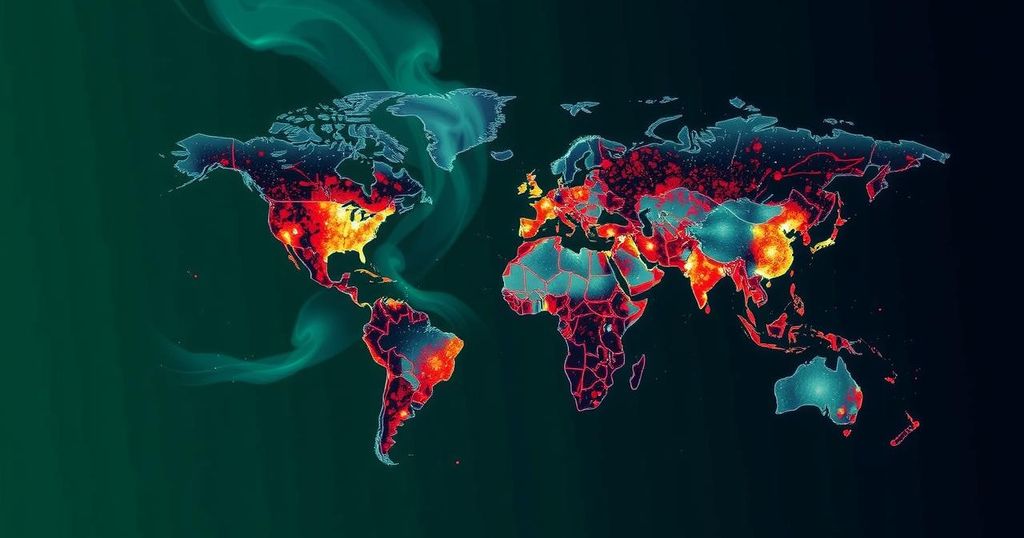Recent data indicates that global methane emissions, especially from oil and gas, waste management, and mining sectors, are increasingly prevalent and underestimated. GHGSat reported a rise to 20,000 super-emitting sites, a significant increase from the previous year. Despite international pledges from oil companies to reduce emissions by 2030, the problem continues to escalate, emphasizing the critical role of satellite technology in monitoring and addressing this climate-related concern.
Recent observations highlight a troubling trend in methane emissions globally, particularly in the oil and gas sectors as well as waste management practices. According to Stephane Germain, the CEO of GHGSat, an organization that monitors methane using satellite technology, we are merely “scratching the surface” in understanding the extent of methane emissions and their impacts on climate change. Methane, a potent greenhouse gas, has been increasingly detected in greater quantities; GHGSat satellites documented approximately 20,000 super-emitting sites across the globe since late 2023, a significant rise from the 15,000 super-emitter sites identified the previous year. This surge in emissions coincides with countries’ commitments made at the 2023 COP28 climate talks to reduce methane emissions, which are primarily produced by oil and gas operations, waste management, and mining activities. Nearly 50 oil companies, responsible for almost half of global oil production, pledged to dramatically cut their methane emissions and cease the routine flaring of gas by 2030. Yet, Germain emphasizes that the issue persists, especially in regions such as North America and Eurasia, where the majority of emissions originate, notably from landfills in Canada. Furthermore, recent studies reveal that existing government estimates of methane emissions from oil and natural gas infrastructure are understated, boasting levels three times higher than previously thought. As methane concentrations continue to rise in the atmosphere, they exacerbate climate change, implying a more severe environmental threat than that posed by carbon dioxide, which, while lasting longer in the atmosphere, is less potent than methane in the short term. Organizations like GHGSat, Carbon Mapper, Kayrros, and MethaneSAT are crucial in providing clearer insights into this escalating crisis, aided by the addition of three new satellites in GHGSat’s fleet this year.
The escalation of methane emissions represents a significant challenge in the fight against climate change. Methane’s impact is substantially more severe than carbon dioxide in the short term, making the documentation and mitigation of its sources critical for climate stability. Industries such as oil and gas, alongside waste management and mining, are the primary culprits contributing to these emissions. At a time when international pledges aim to diminish emissions, the growing detection of super-emitters suggests an urgent need for more effective methodologies and greater accountability within these sectors. The role of satellite technology in monitoring methane emissions has become increasingly vital, as traditional ground-based detection methods often fail to capture the full scope of the problem. By utilizing advanced satellite systems, organizations can compile comprehensive data that influences policy and operational decisions on a global scale.
In summary, global methane emissions continue to present a serious environmental challenge, with recent data indicating a worrying trend of increased emissions from key sectors. Despite international pledges to mitigate these emissions, the reality reveals that the scope of the problem has not been fully grasped. Continued advancements in satellite monitoring offer hope for a clearer understanding and more comprehensive responses to this urgent climate issue. The collective efforts of various organizations in the monitoring of methane will be essential to hold industries accountable and to prioritize environmental integrity moving forward.
Original Source: apnews.com







